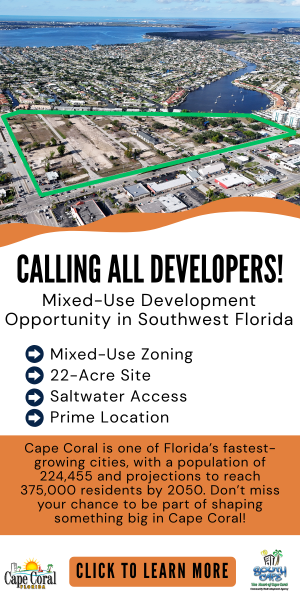Ballston Quarter: A 1950s-Era Mall Turned Inside Out

A major retail center in the DC suburbs removes the roof to reinvent itself.
To compete with the rise of e-commerce, traditional shopping malls are evolving to stay relevant and offer experiences that can’t be found online. Recognizing the central location of most malls, more owners are executing major redevelopments of these aging monoliths, transforming them into compelling, destination-worthy mixed-use environments that reflect the needs and wants of the communities they serve.
One example of this redevelopment strategy in action is the recent renovation of Ballston Quarter, a formerly enclosed shopping mall in Arlington, Virginia, a few miles outside of Washington, D.C.
Over the past 70 years, the site where Ballston Quarter is located has gone through several iterations. From the rise of parking garages to the advent of experiential retail, this regional mall has lived through generations of retail revolutions and undergone two renovations to ensure its continued relevance.
In its latest and most dramatic facelift yet, Ballston Quarter was literally flipped inside out to better connect the retail spaces with the community, enhance the pedestrian experience and create an open-air shopping and entertainment destination in a densely populated area. According to an August 2021 report from local news site ARLow.com, there is a single census tract in the Ballston neighborhood with a population density equivalent to about 96,000 people per square mile, which is similar to the Upper West Side of Manhattan. It is the most densely populated census tract in the entire D.C. metro area. Other nearby census tracts have population densities equivalent to roughly 50,000 people per square mile.
Brookfield Properties developed the $350 million project, which has 365,000 square feet of retail and 406 residential units. Cooper Carry served as architect of record and collaborated with CRTKL, which also acted as design architect, on the re-design of the mall. CRTKL provided full design architect and architect of record services on the project’s residential tower.
From Enclosed to Exposed
One of the most noticeable and significant changes to the property was the extraction of a portion of the mall’s roof. This strategic decision instantly transformed Ballston Quarter into an open-air environment that was more welcoming to visitors. The design team created a multilevel network of retail and dining with storefronts repositioned to face the street. The new configuration encourages an active pedestrian environment, inviting guests to stroll the shopping and entertainment destination and enjoy time with the community.
While taking the roof off was effective in creating a more energized outdoor experience, it presented a new challenge — weatherizing the former indoor shopping space and creating a destination fit for outdoor exposure. Carefully selected building materials and flooring blurred the lines between indoor and outdoor spaces, while sophisticated drainage systems and exterior grade finishes were used throughout the project to combat climate-related wear and tear.
For the first-floor outdoor area, the existing slab was removed and lowered by a foot to rebuild it back with the proper slope to nearby drains. Rather than remove the large existing steel framing members, the top 12 inches were cut off and a steel T section was added to the bottom. This, in essence, lowered the structure by a foot. New infill steel beams and a concrete deck were then added, which sloped to the linear deck drains.
Before the exterior tile was installed on the upper floors, floor drains were added to the once-indoor concrete slab, along with a continuous sheet membrane for waterproofing and crack isolation on the existing concrete slabs. Since the structure would now be exposed to temperature changes, it was necessary to help mitigate expansion and contraction in the tile.
A liquid air-barrier and insulation were also installed on all the new demising walls above tenant storefronts/ceilings to help create a new thermal barrier.
On the upper level, the design team incorporated glazing across the second-floor exterior and added promotional displays throughout, pushing shoppers vertically through the mall and calling attention to the mix of diverse retail.
Ballston Quarter’s recognizable brick exterior was another design consideration for the team. Located along busy Wilson Boulevard, Ballston Quarter has long served as a reference point for the area. With this in mind, the design team preserved a large section of the existing brick exteriors and extended the material into the interiors to create a unified look. The building’s reimagined facade is outfitted with industrial-style black-framed windows and a large painted “Ballston” mural. The restyled facade creates visual appeal and draws traffic to ground-floor retail and restaurants like Punch Bowl Social, Ted’s Bulletin and True Food Kitchen, all of which can be seen from the street.
Bridging the Gap Between Indoor and Outdoor
To better support the new walkable experience, the street environment surrounding Ballston Quarter was altered to extend the development’s existing curb line further out on Wilson Boulevard. This drastic change narrowed the road and made it easier for shoppers to walk along the wide sidewalks and discover the new retail and restaurant offerings before venturing inside.
Further elevating the indoor-outdoor experience, a new plaza anchored by a large greenspace with amphitheater-style seating and surrounded by outdoor patios was added to the property. The outdoor plaza spills into the Quarter Market, a new 25,000-square-foot food hall that features 18 globally inspired culinary concepts. The interior space boasts an industrial, warehouse-inspired theme that integrates the indoors and outdoors with three operable glass garage doors.
Enhancing Connectivity
The original design of the decades-old parking garage made navigating the center challenging. Owned by Arlington County, the eight-story facility is the primary parking complex for a variety of on-site uses. Because of this, it is required to stay open for extended hours to accommodate a wide range of users, including visitors to the Washington Capitals’ MedStar Capitals IcePlex located atop the garage. The IcePlex has 20,000 square feet of training space for the NHL team, plus other skating facilities for amateur and youth leagues.
The design team worked closely with the community to ensure the garage’s pedestrian circulation was improved across all levels. Additional features such as stairs and escalators were added to the existing elevator areas, and the elevators were refurbished to offer a direct connection to the IcePlex.
One of the final components of the Ballston Quarter renovation was a pedestrian bridge connecting the retail center to a nearby station on DC’s Metrorail rapid-transit system. The bridge was frequently used by locals as an access point for the train, and the design team enlisted Cleveland-based studio TECHNE Architects to reconstruct the outdated and rundown bridge. The new design features a more angular, geometric style that blends both form and function.
The newly redesigned Ballston Quarter was unveiled in 2019. Despite some setbacks associated with the COVID-19 pandemic, it has seen substantial boosts in foot traffic and sales. The project could be seen as a model for mall redevelopments that shed dated retail formats for modern, open-air mixed-use destinations that better connect with surrounding communities.
Patrick Finucan is a designer at Cooper Carry; Sam Bennett is an associate principal at Cooper Carry; David Kitchens is a principal at Cooper Carry.
|
Site Rich in Retail History Ballston Quarter is the latest high-profile retail destination at the busy intersection of Wilson Boulevard and Glebe Road in Arlington, Virginia. A timeline: 1951 — The Parkington Shopping Center opens. Initially home to a 300,000-square-foot Hecht’s that was the largest suburban department store on the East Coast at the time, it expanded to include more than 30 stores. However, by the early 1980s, it was in steep decline. 1986 — Ballston Common Mall opens. The four-story shopping center would eventually grow to more than 100 businesses before falling out of favor in the 2000s. 2019 — Ballston Quarter opens. According to a September 2020 article in the Washington Business Journal, the development has “succeeded in activating a long-underutilized site at one of Arlington’s busiest intersections.” |




